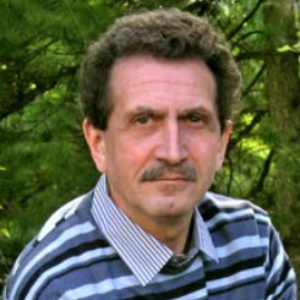Title : Designing Nanogold on-carbon catalysts for green production of Gluconates and Glyphosate
Abstract:
It is well known that gold particles with a size of several nanometers exhibit a very high catalytic activity and/or unusual selectivity in numerous redox reactions. Different procedures have been developed for producing the catalysts containing Au nanoparticles on oxide supports, their catalytic properties being tested in detail. Meanwhile, for many potential applications of gold catalysts carbons would be preferable support materials because of their outstanding qualities. However, easy- to-use methods for synthesis of uniform-sized small Au particles on carbon materials are still lacking. Our report will present the outcomes of our efforts to develop a practical technique for preparation of the finely dispersed Au/C catalysts, which is based on the use of a cationic Au(III) tetraammine complex easily synthesized from HAuCl4 as a precursor of catalytically active component. The results of XRD, TEM, XPS and XANES/EXAFS characterization of this catalysts will be discussed, as well as the data of their testing for the aqueous-phase aerobic oxidation of glucose to gluconates, which are widely used biocompatible and biodegradable chemicals, and for oxidative dealkylation of N-alkyl derivatives of glyphosate. The latter represents the final stage of the eco-friendly (“atom-efficient”) method for production of glyphosate which is the most-used systemic herbicide in the world.
Study of the Au/C catalysts in aerobic oxidation of glucose in the presence of NaOH/H2O at 60?C and pH ca. 9 showed their outstanding catalytic performance that allows producing Na gluconate with 96-97% selectivity at ca. 95% conversion. The impact of the mass-transfer process on the overall reaction kinetics in dependence on the support pore texture, the mean grain size of the catalyst and penetration depth of gold into the catalyst grain will be considered on the basis of the data obtained. It will be demonstrated that at low glucose/Au molar ratios, when O2 dissolution in the aqueous phase is the rate-determining step of the process, the rate of glucose oxidation over the Au/C catalysts exceeds that over the Au/Al2O3 catalysts, which is attributed to a higher adhesion of the hydrophobic carbon support to the gas–liquid interface facilitating the oxygen mass transfer towards catalytic sites. Addition of palladium to the Au/C composites provides a further increase in the catalytic activity and selectivity due to formation of the alloyed Pd-Au nanoparticles and possibility of “concerted” reaction mechanism.
Finally, we will demonstrate that the Au/C catalysts possess good catalytic activity and selectivity for aqueous-phase oxidative dealkylation of N-isopropyl-N- (phosphonomethyl) glycine to glyphosate at 70?? and atmospheric pressure with H2O2 as the oxidizing agent (93.1% selectivity at 98.1% conversion in 120 min after the beginning of the catalytic run). The highest yield of glyphosate is provided by nanogold deposited onto the pre-oxidized carbons. Testing other N-substituted glyphosates reveals that both the substrate reactivity and selectivity for glyphosate increase with the electron-donating effect of the substituent at the nitrogen atom. The mechanism of N-IPMG dealkylation with H2O2 over the carbon-supported gold catalysts explaining this pattern and the reason for the promoting effect of surface acidic groups will be presented, as well.



